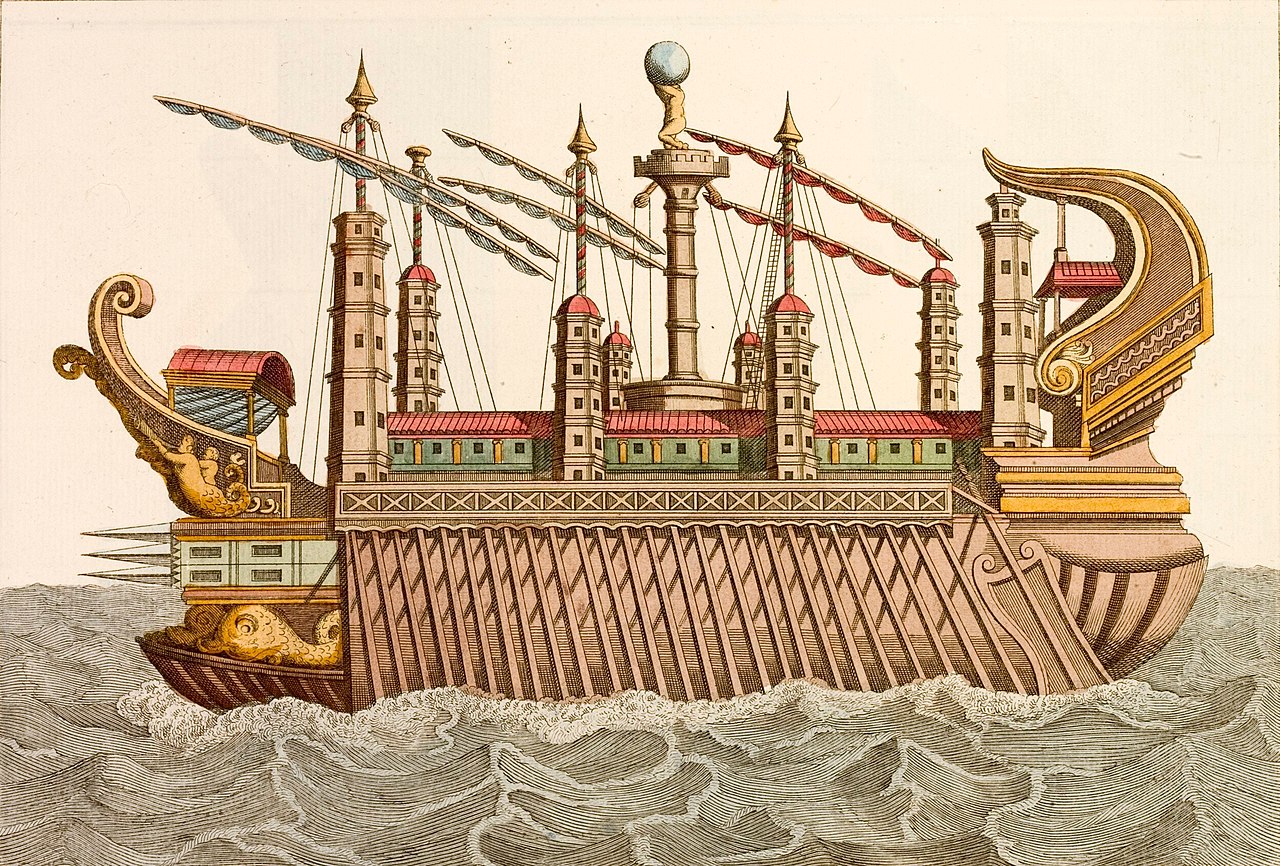 the annals of ancient history, few naval vessels have captured the imagination quite like the Syracusia. Built in ancient Syracuse during the reign of the Greek tyrant Hiero II, the Syracusia stands as a testament to the engineering prowess and maritime ambitions of the time. In this article, we will delve into the fascinating story of the Syracusia, explore its incredible features, and shed light on its historical significance as the biggest naval ship in ancient history.
the annals of ancient history, few naval vessels have captured the imagination quite like the Syracusia. Built in ancient Syracuse during the reign of the Greek tyrant Hiero II, the Syracusia stands as a testament to the engineering prowess and maritime ambitions of the time. In this article, we will delve into the fascinating story of the Syracusia, explore its incredible features, and shed light on its historical significance as the biggest naval ship in ancient history.
The Construction of the Syracusia: A Monumental Feat
The Syracusia was the brainchild of Hiero II, the ruler of Syracuse from 270 to 215 BCE. Eager to showcase the might and grandeur of his kingdom, Hiero II commissioned the construction of a colossal naval ship that would leave a lasting impression on the ancient world. The project was a massive undertaking, requiring meticulous planning, skilled craftsmanship, and ample resources.
To create the largest naval ship of its time, the builders of the Syracusia implemented innovative design and engineering techniques. The ship measured around 134 meters (440 feet) in length, with a width of approximately 18 meters (59 feet). It boasted multiple decks, staterooms, living quarters, and even a garden with trees and plants. The ship’s impressive size and luxurious features were a testament to the advanced shipbuilding capabilities of ancient Syracuse.
The construction of the Syracusia required significant collaboration and the mobilization of vast resources. Skilled artisans, engineers, and laborers worked diligently to bring Hiero II’s vision to life. The project also necessitated the procurement of abundant timber, metals, and other materials from various regions of the Mediterranean. This collaborative effort exemplified the power and influence of ancient Syracuse and its ability to undertake ambitious construction projects.
The Splendor of the Syracusia: A Floating Palace
The Syracusia was not merely a naval vessel but also a floating palace fit for a king. Its opulent interior featured lavishly decorated staterooms, dining halls, and leisure spaces. The ship accommodated Hiero II and his entourage, providing all the comforts and luxuries one would expect from a grand residence. The inclusion of a garden with living vegetation showcased the ship’s exceptional design and served as a symbol of opulence and prosperity.
An interesting aspect about the ship is that it has been built by Archimedes, who is considered to be one of the ancient world’s most brilliant minds.

;The construction and magnificence of the Syracusia were meant to project the wealth, power, and cultural sophistication of Syracuse. Hiero II aimed to demonstrate the city’s dominance in the Mediterranean and impress foreign dignitaries and allies. The ship’s sheer size and luxurious features were a testament to the economic prosperity and cultural achievements of ancient Syracuse.
The Syracusia served as a diplomatic tool, carrying Hiero II and his retinue on diplomatic missions and state visits. The ship’s grandeur and impressive presence undoubtedly commanded respect and awe, further enhancing Syracuse’s influence and prestige in the ancient world. The Syracusia became a symbol of the city’s maritime prowess and an emblem of Hiero II’s reign.
Legacy and Historical Significance
The Syracusia’s construction and design had a lasting impact on ancient naval architecture. Its colossal size and luxurious amenities set a new standard for naval vessels, inspiring future generations of shipbuilders and naval engineers. The innovative techniques employed in its construction paved the way for the development of larger and more advanced ships in subsequent centuries.
The Syracusia stands as a testament to the legacy of Hiero II and his reign in Syracuse. By commissioning the construction of such a monumental ship, Hiero II left an indelible mark on the history of ancient Syracuse. The Syracusia represented his vision, ambition, and desire to elevate Syracuse’s status and influence.
The Syracusia provides valuable insights into the seafaring capabilities and maritime achievements of ancient civilizations. The construction of such a colossal ship required advanced knowledge of shipbuilding, navigation, and logistical planning. The Syracusia serves as a window into the technological advancements and seafaring prowess of ancient Syracuse and the broader Mediterranean region.
The Syracusia, the largest naval ship in ancient history, remains an awe-inspiring testament to the engineering marvels of the ancient world. Hiero II’s vision and the collaborative efforts of skilled craftsmen and laborers resulted in a ship of unparalleled size and opulence. The Syracusia not only showcased Syracuse’s wealth and power but also left a lasting legacy in naval architecture and the annals of ancient history. Its grandeur and historical significance continue to captivate the imagination, providing a glimpse into the extraordinary achievements of our ancient predecessors.
Avid Writer with invaluable knowledge of Humanity!
Upcoming historian with over 30 million views online.
“You make your own life.”





